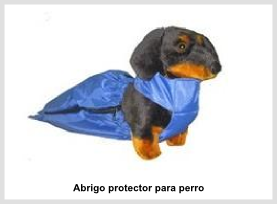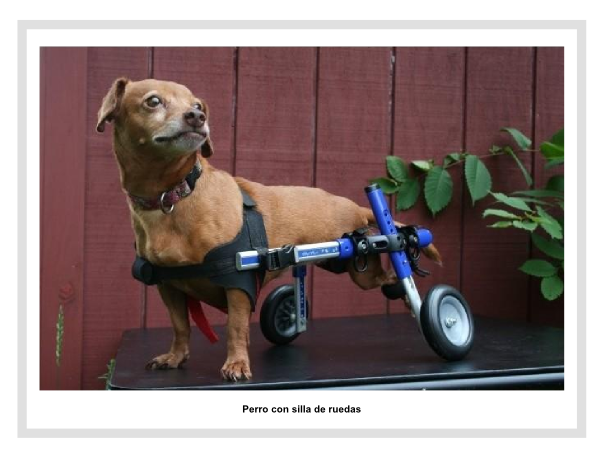When an animal suffers from a pathology that prevents it from moving normally, it is not only necessary to take care of the affected parts, but we must also take into account other considerations that affect the animal as a whole and interfere with its quality of life and recovery.
.png) 1. HYGIENE
1. HYGIENE
We must keep the animal's skin out of contact with feces and/or urine. We can wash with saline or special wipes for dogs. Baby wipes can irritate, as the skin pH of humans and dogs is different.
2. FEEDING
Pathological states cause a nutritional imbalance. Good nutrition is VITAL for the animal's recovery. You should seek advice from the vet about what is the best diet for the dog. Keep in mind that often there are other diseases apart from paralysis and we must provide the dog with a diet suitable for its needs. For example, in older animals, it is very common to have kidney problems. Much of their treatment is based on a specific diet (low in proteins and phosphorus), essential to try to stop this disease. It is also very likely that the vet will want to combine two types of food or add a supplement to cover both diseases.
3. BEDSORES
Bedsores usually form in areas that protrude most from the body, such as elbows, ankles, hips, and the periocular bone. They are due to both the constant support of these areas and the nutritional deficit caused by severe diseases. To avoid them, it is vital to change the animal's position every few hours and use passive physiotherapy therapies (that is, the owner moves the animal's limbs). We can help heal these wounds with healing and moisturizing ointments: Centella Asiatica and Aloe vera.
4. PROTECT THEIR SKIN
There are diapers specially designed for dogs that, in addition to absorbing urine and feces, help prevent skin irritation and save you some messes on the floor or carpets. It is very important to check the diaper frequently and change it whenever necessary. We must be especially cautious when the dog is in outdoor environments, as there is the possibility that flies lay eggs on dirty parts of their skin, the dog having mobility problems will not be able to scare them away. Whenever the animal needs to go outside, remove the diaper so that its skin can "breathe" and moisture does not cause ulcers. You can also use absorbent pads to put on its bed.
5. AVOID DRAGGING
It is the most common way wounds appear. These are complicated to solve because the animal will always tend to lean on them. Therefore, you should prevent them from appearing. There are protective coats to prevent the animal from coming into contact with the ground.
6. TAKE CARE OF THEIR SKIN
If frequent baths are necessary, we recommend using shampoos specially formulated for allergic dogs, as these do not destroy the protective lipid barrier and can be used several times a week. We can also help the skin by giving supplements to strengthen it, such as omega-3 fatty acids and some vitamins. Consult with your vet, there are many formulations available.
7. WATCH THEIR BLADDER
Many dogs with paralysis have problems urinating. Some are unable to hold urine and it comes out in droplets, and others are unable to empty the bladder and the owner must do it for them, about 3 times a day. Maintaining good urination hygiene will help prevent urinary infections, which are common in these cases. It will also be important to be very observant to be able to detect changes in the smell and/or color of the urine, which could indicate that there may be a problem.
unable to hold urine and it comes out in droplets, and others are unable to empty the bladder and the owner must do it for them, about 3 times a day. Maintaining good urination hygiene will help prevent urinary infections, which are common in these cases. It will also be important to be very observant to be able to detect changes in the smell and/or color of the urine, which could indicate that there may be a problem.
8. WHEELCHAIRS
If the animal retains strength in the forelimbs, the use of a canine wheelchair can be very beneficial: we will largely prevent pressure ulcers, strengthen the animal's body, helping to gain muscle mass and, above all, we will help their mental well-being, providing them with that autonomy that dogs so much desire. It is recommended to consult with the veterinarian about the suitability of the use of the wheelchair in each case.
9. PHYSIOTHERAPY
Massage your dog. Massages increase blood circulation, help reduce pain and strengthen the bond with the owner. Gently move the limbs, without forcing. In this way you will prevent the joints from stiffening due to immobility. You have more information here. Whenever possible, we can use harnesses front, rear or complete to help him walk and allow him some active movement. There are professionals who come to your home to perform physiotherapy techniques and there are veterinary centers in Spain where these techniques are applied. In many cases, hydrotherapy is very interesting as it allows them to move without having to bear their weight. To do it, the use of life jackets is indispensable.
10. WALK!
When possible, share walks outdoors, whether with special harnesses, wheelchairs, backpacks or strollers. Dogs are olfactory beings. They NEED to smell changing environments and other animals to have good mental health. Don't let paralysis be an excuse to deprive them of this: you'll see how much the change in mood is noticeable and that, obviously, will be reflected in their physical health.


